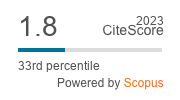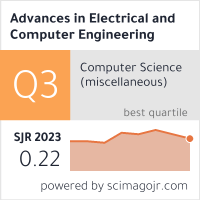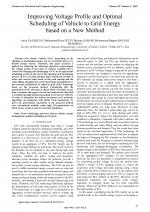| 1/2018 - 10 |
Improving Voltage Profile and Optimal Scheduling of Vehicle to Grid Energy based on a New MethodNAZARLOO, A. |
| View the paper record and citations in |
| Click to see author's profile in |
| Download PDF |
Author keywords
discharges (electric), electric vehicles, energy management, optimal scheduling, power grids
References keywords
grid(23), power(14), vehicle(13), electric(10), vehicles(8), energy(7), plug(6), smart(5), hybrid(5), distribution(5)
Blue keywords are present in both the references section and the paper title.
About this article
Date of Publication: 2018-02-28
Volume 18, Issue 1, Year 2018, On page(s): 81 - 88
ISSN: 1582-7445, e-ISSN: 1844-7600
Digital Object Identifier: 10.4316/AECE.2018.01010
Web of Science Accession Number: 000426449500010
SCOPUS ID: 85043286801
Abstract
The electric vehicles (EVs), depending on the charging or discharging modes, can act as flexible loads or as flexible energy sources. Therefore, this paper proposes a method for achieving the following objectives: improvement the voltage profile of the point of common coupling (PCC), control the charging and discharging of EVs in an appropriate scheduling so that at the end of the charging and discharging process all EVs are fully charged, improvement the profiles of active and reactive loads based on the peak shaving and the valley filling, charging rate control and energy management for the economic justification of vehicle to grid (V2G) technology based on the proposed method. Considering that the penetration of EVs and state of charge (SOC) of battery at any time is random, this paper extracts and analyzes the data that is available through national household travel surveys (NHTS). In order to determine the desired parameters, two stochastic algorithms are integrated with Monte Carlo simulations. To prove the performance superiority of the proposed method over conventional methods under high EVs-penetration, an IEEE 14-bus system is used for real-time simulation. |
| References | | | Cited By «-- Click to see who has cited this paper |
| [1] Y. Saber and G. K. Venayagamoorthy, "Intelligent unit commitment with vehicle-to-grid-A cost-emission optimization," J. Power Sources, vol. 195, pp. 898-911, 2010. [CrossRef] [Web of Science Times Cited 227] [SCOPUS Times Cited 313] [2] Y. Fan, W. Zhu, Z. Xue, L. Zhang, and Z. Zou, "A multi-function conversion technique for vehicle-to-grid applications," Energies, vol. 8, no. 8, pp. 7638-7653, 2015. [CrossRef] [Web of Science Times Cited 11] [SCOPUS Times Cited 12] [3] M. Singh, "Real-Time coordination of electric vehicles to support the grid at the distribution substation level," IEEE Syst. J., vol. 9, no. 3, pp. 1000-1010, Sept. 2015. [CrossRef] [Web of Science Times Cited 43] [SCOPUS Times Cited 57] [4] R. Sioshansi and P. Denholm, "Emissions impacts and benefits of plug-in hybrid electric vehicles and vehicle-to-grid services," Environmental Sci. Technol., vol. 43, pp. 1199-1204, 2009. [CrossRef] [Web of Science Times Cited 193] [SCOPUS Times Cited 223] [5] W. Kempton and J. Tomic, "Vehicle-to-grid power fundamentals: Calculating capacity and net revenue," J. Power Sources, vol. 144, pp. 268-279, 2005. [CrossRef] [Web of Science Times Cited 1412] [SCOPUS Times Cited 1859] [6] S. Han, H. Han, and K. Sezaki, "Development of an optimal vehicle-to-grid aggregator for frequency regulation," IEEE Trans. Smart Grid, vol. 1, no. 1, pp. 65-72, Jun. 2010. [CrossRef] [Web of Science Times Cited 749] [SCOPUS Times Cited 993] [7] J. R. Pillai and B. B. Jensen, "Integration of vehicle-to-grid in the western Danish power system," IEEE Trans. Sustain. Energy, vol. 2, no. 1, pp. 12-19, Jan. 2011. [CrossRef] [Web of Science Times Cited 273] [SCOPUS Times Cited 368] [8] A. Hajimiragha, C. A. Cañizares,M.W. Fowler, and A. Elkamel, "Optimal transition to plug-in hybrid electric vehicles in Ontario, Canada, considering the electricity-grid limitations," IEEE Trans. Ind. Electron., vol. 57, no. 2, pp. 690-701, Feb. 2010. [CrossRef] [Web of Science Times Cited 213] [SCOPUS Times Cited 274] [9] J. Donadee, and M. D. Ilic, "Stochastic optimization of grid to vehicle frequency-regulation capacity bids," IEEE Trans. on Smart Grid, vol. 5, no. 2, pp. 1061-1069 Mar. 2014. [CrossRef] [Web of Science Times Cited 115] [SCOPUS Times Cited 125] [10] E. Sortomme and M. El-Sharkawi, "Optimal combined bidding of vehicleto-grid ancillary services," IEEE Trans. Smart Grid, vol. 3, no. 1, pp. 70-79, Mar. 2012. [CrossRef] [Web of Science Times Cited 158] [SCOPUS Times Cited 194] [11] A. K. Madawala and D. J. Thrimawithana, "A bidirectional inductive power interface for electric vehicles in V2G systems," IEEE Trans. Ind. Electron., vol. 58, no. 10, pp. 4789-4796, Oct. 2011, [CrossRef] [Web of Science Times Cited 531] [SCOPUS Times Cited 672] [12] S. Wang and Z. Wang, "Grid power peak-shaving and valley-filling using vehicle to grid systems," IEEE Trans. on Power Del., vol. 28, no. 3, pp. 1822-1828, Jul. 2013. [CrossRef] [Web of Science Times Cited 531] [SCOPUS Times Cited 672] [13] K. Clement Nyns, J. Driesen, and E. Haesen, "The impact of charging plug in hybrid electric vehicles on a residential distribution grid," IEEE Trans. Power Syst., vol. 25, no. 1, pp. 371-380, Feb. 2010. [CrossRef] [Web of Science Times Cited 1825] [SCOPUS Times Cited 2471] [14] Y. Ota, H. Taniguchi, T. Nakajima, K. Liyanage, A. Yokoyama, and J. Baba, "Autonomous distributed V2G (Vehicle to Grid) satisfying scheduled charging," IEEE Trans. Smart Grid, vol. 3, no. 1, pp. 559-564, Mar. 2012. [CrossRef] [Web of Science Times Cited 343] [SCOPUS Times Cited 436] [15] Y. Ma, T. Houghton, A. Cruden, and D. Infield, "Modeling the benefits of vehicle to grid technology to a power system," IEEE Trans. Power Syst., vol. 27, no. 2, pp. 1012-1020, May 2012. [CrossRef] [Web of Science Times Cited 193] [SCOPUS Times Cited 258] [16] M. Singh, P. Kumar, and I. Kar, "Implementation of vehicle to grid infrastructure using fuzzy logic controller," IEEE Trans. Smart Grid, vol. 3, no. 1, pp. 565-577, Mar. 2012. [CrossRef] [Web of Science Times Cited 154] [SCOPUS Times Cited 195] [17] M. Singh, P. Kumar, and I. Kar, "Designing a multi charging station for electric vehicles and its utilization for the grid support," IEEE PES General Meeting, pp. 1-8, San Diego, CA, Jul. 2012. [CrossRef] [Web of Science Times Cited 73] [SCOPUS Times Cited 101] [18] E. Pashajavid, M. Aliakbar Golkar, "Charging of plug-in electric vehicles: Stochastic modelling of load demand within domestic grids", 20th Iranian Conf. Electrical Engineering (ICEE), Tehran, 2012, pp. 535 - 539. [CrossRef] [SCOPUS Times Cited 42] [19] S. Shao, M. Pipattanasomporn, and S. Rahman, "Challenges of PHEV penetration to the residential distribution network," in Proc. IEEE Power Energy Society General Meeting, Calgary, AB, Canada, 2009, pp. 1-8. [CrossRef] [SCOPUS Times Cited 347] [20] C. Camus, C. M. Silva, T. L. Farias, and J. Esteves, "Impact of plug-in hybrid electric vehicles in the Portuguese electric utility system," in Proc. IEEE Power Engineering, Energy and Electrical Drives Conf., Lisbon, Portugal, 2009, pp. 285-290. [CrossRef] [SCOPUS Times Cited 63] [21] Z. Darabi, and M. Ferdowsi, "Aggregated impact of plug-in hybrid electric vehicle on electricity demand profile," IEEE Trans. Sustainable Energy, vol. 2, no. 4, pp. 501-508, Oct. 2011. [CrossRef] [Web of Science Times Cited 267] [SCOPUS Times Cited 349] [22] M. Yilmaz and P.T. Krein, "Review of the Impact of Vehicle-to-Grid Technologies on Distribution Systems and Utility Interfaces," IEEE Trans. Power Elec., vol. 28, no. 12, pp. 5673 - 5689, Dec. 2013. [CrossRef] [Web of Science Times Cited 628] [SCOPUS Times Cited 798] [23] M. Baran and F.Wu, "Network reconfiguration in distribution systems for loss reduction and load balancing," IEEE Trans. Power Del., vol. 4, no. 2, pp. 1401-1407, Apr. 1989. [CrossRef] [Web of Science Times Cited 3497] [SCOPUS Times Cited 3205] [24] J. Barton and D. Infield, "Energy storage and its use with intermittent renewable energy," IEEE Trans. Energy Convers., vol. 19, no. 2, pp. 441-448, Jun. 2004, [CrossRef] [Web of Science Times Cited 934] [SCOPUS Times Cited 1213] Web of Science® Citations for all references: 12,370 TCR SCOPUS® Citations for all references: 15,240 TCR Web of Science® Average Citations per reference: 495 ACR SCOPUS® Average Citations per reference: 610 ACR TCR = Total Citations for References / ACR = Average Citations per Reference We introduced in 2010 - for the first time in scientific publishing, the term "References Weight", as a quantitative indication of the quality ... Read more Citations for references updated on 2024-07-19 16:36 in 163 seconds. Note1: Web of Science® is a registered trademark of Clarivate Analytics. Note2: SCOPUS® is a registered trademark of Elsevier B.V. Disclaimer: All queries to the respective databases were made by using the DOI record of every reference (where available). Due to technical problems beyond our control, the information is not always accurate. Please use the CrossRef link to visit the respective publisher site. |
Faculty of Electrical Engineering and Computer Science
Stefan cel Mare University of Suceava, Romania
All rights reserved: Advances in Electrical and Computer Engineering is a registered trademark of the Stefan cel Mare University of Suceava. No part of this publication may be reproduced, stored in a retrieval system, photocopied, recorded or archived, without the written permission from the Editor. When authors submit their papers for publication, they agree that the copyright for their article be transferred to the Faculty of Electrical Engineering and Computer Science, Stefan cel Mare University of Suceava, Romania, if and only if the articles are accepted for publication. The copyright covers the exclusive rights to reproduce and distribute the article, including reprints and translations.
Permission for other use: The copyright owner's consent does not extend to copying for general distribution, for promotion, for creating new works, or for resale. Specific written permission must be obtained from the Editor for such copying. Direct linking to files hosted on this website is strictly prohibited.
Disclaimer: Whilst every effort is made by the publishers and editorial board to see that no inaccurate or misleading data, opinions or statements appear in this journal, they wish to make it clear that all information and opinions formulated in the articles, as well as linguistic accuracy, are the sole responsibility of the author.





